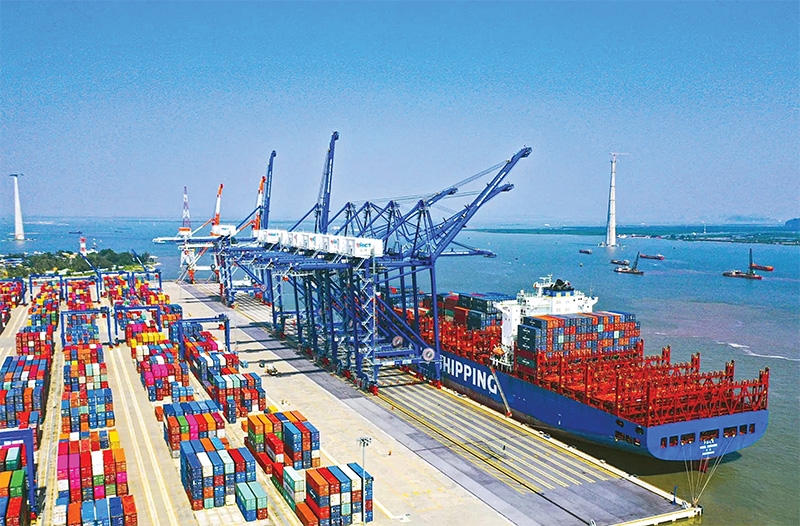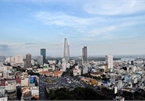 |
|
The World Bank estimates that Vietnam’s economy will grow by 6.8 per cent in 2021, photo Le Toan
|
The World Bank last week released its fresh forecast for the Vietnamese economy, which is expected to grow by almost 3 per cent in 2020 while the world economy is expected to contract at least by 4 per cent amidst the biggest global shock of past decades.
The bank attributed Vietnam’s good economic performance to the resilience of both its domestic economy and external sector. Beyond the containment of the pandemic by bold, early, and innovative measures, the government has also used its fiscal and monetary policies to provide breathing space to the private sector and jump start the recovery. For example, public spending started rising again after three years of fiscal consolidation. The first nine months of 2020 saw a 40 per cent year-on-year increase in the disbursement of the public investment programme.
The World Bank said that the external sector this year – the main driver of economic growth in Vietnam over the past decade – has performed exceptionally well since the beginning of the COVID-19 crisis.
“Vietnam is expected to achieve a current account surplus. It is registering its highest-ever merchandise trade surplus and accumulating almost $100 billion in international reserves [up from $80 billion at the end of 2019],” said the World Bank’s report. “The current account surplus will be achieved even though the tourism sector has been badly hurt by the ban on foreign visitors, and by the expected decline in remittances from Vietnamese expatriates by approximately 7.8 per cent in 2020 compared to a year earlier.”
In 2019, the quantity of remittances sent to Vietnam amounted to $16.68 billion, according to the State Bank of Vietnam. Ho Chi Minh City accounts for about $5.3 billion.
According to the Asian Development Bank, Vietnam’s current account is expected to see a surplus equivalent to 1 per cent of GDP in 2020 before rising to 1.5 per cent in 2021.
Vietnam has been continuously reporting current account surpluses since 2011, and more recently has seen the figure at 2.9 per cent in 2017, 3 per cent in 2018, and 2 per cent in 2019.
The achievements noted by the World Bank will be made following a climb in exports despite a fall in state budget revenues and foreign direct investment (FDI). Specifically, the government has estimated that total export-import turnover for 2020 will be $527 billion, up 1.8 per cent on-year. Export turnover will be $267 billion, a 1 per cent rise against the previous year, and import turnover will stand at $260 billion, up 2.6 per cent on-year. The total trade surplus will therefore be about $7 billion.
In the first 11 months, Vietnam’s total export turnover hit $254.6 billion, up 5.3 per cent on-year. Vietnamese exporters earned $73 billion of this, up 1.6 per cent on-year and accounting for 28.7 per cent of the country’s total export turnover, while foreign exporters fetched $181.6 billion (excluding crude oil exports), up 6.9 per cent, and responsible for 71.3 per cent of the economy’s total.
Meanwhile, under the government’s calculations, total state budget revenue for 2020 will likely be about VND1.32 quadrillion ($57.4 billion), equal to 87.5 per cent of initial estimates, and total state budget spending will be over VND1.68 quadrillion ($73 billion), tantamount to 96.5 per cent of initial estimates. Total budget overspending will be around VND360 trillion ($15.65 billion) or 4.99 per cent of GDP.
The government also estimated that total foreign investment in Vietnam, in terms of newly-registered, newly-added, and capital contribution and stake acquisition, for 2020 will be about $34-35 billion, down 10.1-12.8 per cent on-year. Total disbursement will likely be about $19-20 billion, down 1.9-6.8 per cent on-year.
However, according to the World Bank, overseas investors have continued pouring money in and/or shifting production activities to Vietnam due to the country’s strong management of the pandemic.
“Continued strong FDI signals investor confidence in Vietnam’s economic prospects, bolstering the capital account,” said Jacques Morisset, lead economist for the World Bank in Vietnam.
In the first 11 months of 2020, Vietnam attracted $26.43 billion in FDI, including newly-registered and newly-added capital, as well as stake acquisitions and capital contributions, down 16.9 per cent on-year, and the total disbursed sum hit $17.2 billion, down 2.4 per cent on-year, according to the Ministry of Planning and Investment.
This remains a remarkable achievement, given the United Nations Conference on Trade and Development’s projection of a 30-45 per cent decline in FDI inflows to East Asia in 2020, the World Bank noted.
“Looking ahead, Vietnam’s prospects appear positive as the economy is projected to grow by about 6.8 per cent in 2021 and, thereafter, stabilise at around 6.5 per cent,” stated the World Bank report. “This projection assumes that the COVID-19 crisis will be brought gradually under control, notably through the introduction of an effective vaccine. Yet, the magnitude and duration of the pandemic as well as its economic implications are hard to predict and, for this reason, a lower-case scenario cannot be discarded.” VIR
Thanh Dat

Vietnam to become world’s 19th largest economy by 2035: CEBR
Vietnam’s economy is expected to move to the 19th position in the rankings of the World Economic League Table in 2035, according to the Centre for Economics and Business Research (CEBR).

Vietnam's economy to grow 6.8 percent in 2021: World Bank
Vietnam’s prospects appear positive as the economy is projected to grow by about 6.8 percent in 2021 and, thereafter, stabilise at around 6.5 percent, according to the latest World Bank’s economic update for Vietnam “Taking Stock”.